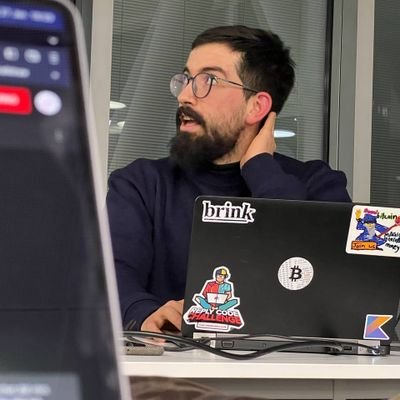Brink is proud to announce the recipients of its latest round of open source developer grants. After an open grant application process, the Brink board of directors has selected four developers who have demonstrated continued commitment to open source Bitcoin development.
Each of the four grant recipients describes their Bitcoin experience and goals below:
“0xB10C”

I am a Bitcoin developer curious about what is happening on the Bitcoin network. Over the past years, I’ve built tools to visualize and observe the Bitcoin mempool, mining pool transaction selection, and other protocol level statistics.
After completing the Chaincode Labs Summer Residency seminars in 2019, I worked as a freelance developer for ShiftCrypto and CoinMetrics. At CoinMetrics, I helped bootstrap Farum, a real-time network and attack monitoring suite for Bitcoin. My work includes patching Bitcoin Core to expose a real-time interface for changes to the node’s mempool and chain view, along with software to monitor the mining jobs of hundreds of Stratum servers to detect, for example, network splits early.
I decided to focus entirely on open source projects in early 2021 and accepted a one-year grant offer from Coinbase. During this year, I built miningpool-observer, mentored two Summer of Bitcoin mentees, introduced tracepoints for Userspace, Statically Defined Tracing to Bitcoin Core, started working on making regular reorgs on the Signet test network a reality, and published an open-content blog for Bitcoin developers called bitcoin-dev.blog.
With support from Brink in 2022, I plan to continue work on tracepoints in Bitcoin Core, including interface tests, review, and the addition of further tracepoints. Another goal is to launch a Signet with regular reorgs and a tool to explore reorgs visually. After observing flooding attacks on the Bitcoin P2P network in the summer of 2021, I set out to build a P2P network monitoring and anomaly detection tool in 2022. The goal is to feed the observations into Bitcoin and Bitcoin Core development, improving the P2P network robustness. I also plan to write up further Mempool Observations and start a similar series of blog posts for P2P network observations.
Vincenzo Palazzo

I am an open source software developer and in my free time a Master’s Student at the University of Pisa in Italy. I became interested in Bitcoin in 2019 due to my bachelor’s degree. In the year after discovering Bitcoin, I became involved in different projects related to the Lightning Network protocol.
I have been working on the Core Lightning (previously known as C-Lightning) implementation as an active contributor for the last nine months. I am the maintainer of lnprototest, a Lightning BOLT Protocol Test Framework, and maintainer of rust-clightning-rpc, an interface from rust to the C-Lightning daemon through RPC.
With my Brink grant, I will focus on improving and supporting the C-Lightning implementation with new features as well as review pull requests. I also plan to contribute to review of the Lightning specification.
Niklas Gögge

I first got interested in Bitcoin in 2017, but it wasn’t until late 2018 when I read Mastering Bitcoin that I got fully obsessed with the technical side of Bitcoin.
With the start of the pandemic I had a lot of time on my hands and started contributing to Bitcoin. I found multiple talks of Tadge Dryja talking about Utreexo which prompted me to hop on IRC and ask where I can help out. The Utreexo project introduces a hash based dynamic accumulator for Bitcoin’s UTXO set. A dynamic accumulator is a compact representation of a set to which elements can be added, removed, and proven. Utreexo aims to make it easier to run full nodes by trading off the storage requirements of the UTXO set for a bandwidth increase.
In 2021 I worked at Mozilla as a part time student worker on the Firefox security infrastructure team. In my spare time, while working at Mozilla and finishing up my bachelors degree, I ported the Utreexo accumulator library to C++ (libutreexo) and worked on a prototype Utreexo implementation for Bitcoin Core. I participated in the PR review club and opened some of my own PRs (#22340, #21603).
The grant from Brink gives me the opportunity to work full time on Bitcoin Core without distractions. I will continue my work on the C++ implementation of Utreexo and propose a proof-of-concept PR that people can test and review. In addition to working on Utreexo I plan on making more security focused contributions to Bitcoin Core and review PRs.
Bruno Garcia

I discovered Bitcoin in 2015 and fell in love with the concept of digital money and how this could improve and collaborate for freedom. Years later, I started studying the Bitcoin protocol more, reading books like Programming Bitcoin, Mastering Bitcoin, and other materials from the internet.
In 2021, I attended the Chaincode Bitcoin Protocol Development Seminar where I learned more about the Bitcoin protocol and started contributing to Bitcoin Core. Since I have a DevSec and QA background, my journey started by reviewing and reading the functional tests. This is how I discovered an inconsistency in the taproot test and got my first PR merged (#21081).
Since then, I have continued contributing to Bitcoin Core by testing and reviewing PRs, improving the test coverage, and recently P2P and wallet work. I also wrote a coin selection library in Typescript that implements the same strategies as Bitcoin Core. In addition to this development and review, I mentor some students from one of the best universities in Latin America on their Bitcoin studies, providing materials and regular meetings to discuss and learn more about it.
I am very excited for this new chapter and very grateful to Brink for this grant which allows me to dedicate part of my time to Bitcoin Core. Most of my time I intend to spend reviewing and testing PRs. Besides that, I will work to improve test coverage by covering more features and scenarios on functional tests and exploring more kinds of testing, e.g. adding more scenarios to stress tests, writing mutation tests, and other ones. Also, improving some P2P and wallet work, focusing on safety and performance.
If you or your organization is interested in supporting open source Bitcoin development, feel free to email us, donate@brink.dev.
Developers interested in either the grant or fellowship programs can apply now for the next funding round.
Keep in touch
Subscribe to the Brink newsletter for future blog posts.


